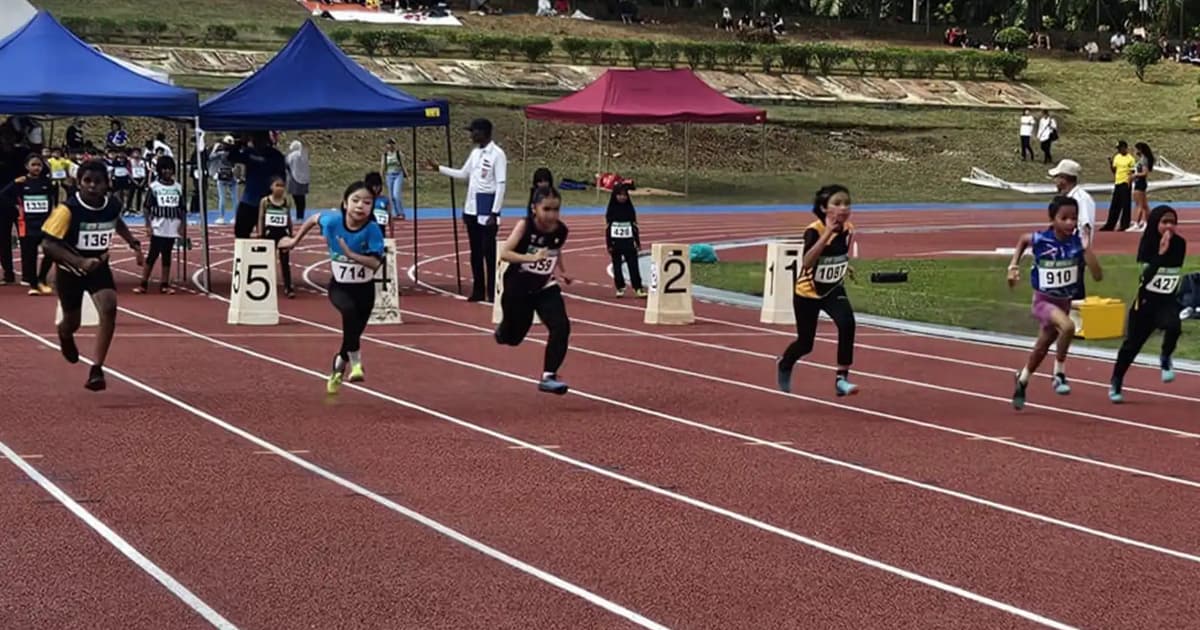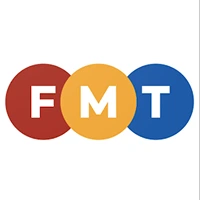
The whistle blew and they lined up. Eight to a lane, 18 heats to clear in the 100m.
For the boys and girls aged 10–12, and for boys aged 13–15, the track never stayed empty. Heat after heat, fresh faces sprinted down the straight.
Few in Malaysian athletics could remember such a sight: not a national meet, not a school carnival, but a development championship so packed that nearly 60 starts were needed for just three categories of one event.
This was the Federal Territory Athletics Association (FTAA) Rakan Muda Athletics Development Championships, held last weekend at the Stadium UPM in Serdang.
The numbers told their own story. The inaugural edition in 2023 drew just over 1,000 participants. Last year, 1,669 signed up.
This year, 1,613 athletes aged seven to 15 came from 103 school and club teams. Several more were turned away; the organisers had reached their limit.
Consider the breakdown. Boys aged 13–15 in the 100m: 18 heats, 144 sprinters. The same number for boys and girls aged 10–12.
Boys aged seven-nine in the 80m: 12 heats, 96 runners. Girls in that age group: 10 heats, 80 athletes.

In the 200m for girls aged 10–12, 17 heats (136 runners). The boys had 13 (104). In the 400m for girls aged 13–15, nine heats (72); the boys, 11 (88).
Even the 1,500m for boys aged 13–15 had six heats (48 middle-distance runners).
That’s more than 1,000 children in nine events, before adding the other running events and field disciplines.
Given the entries, the format had to stretch. From 18 heats, 24 sprinters advanced to the semi-finals, then the best eight fought for medals in the finals.
Keeping it affordable
Each athlete paid RM10 to enter.
“We are about development, not profit,” said FTAA president V Pulanthiran. With support from the youth and sports ministry and the Federal Territory sports council, RM10 was enough, he added. “Event companies charge big amounts.”
Accessibility mattered. With school budgets tight and parents counting costs, the low fee was a statement that athletics belongs to everyone, not just those who can afford elite competition.
Parents in the stands
The stands were loud and full. Many parents did more than cheer. They handed out medals.
“Imagine a daughter receiving her medal from her mother,” said Pulanthiran. “That picture will be framed in their home forever.”
It was more than sentiment. “Involving parents reinforced that the meet was not about stardom. It was about building families into the fabric of athletics,” said Pulanthiran.
Pathway ahead
For a sport often written off as stagnant, the weekend was a breath of fresh air.
The sight of 1,600 children filling the lanes gave athletics something it has lacked: proof that the grassroots are alive, at least in Kuala Lumpur.
The problem has never been children’s interest. The problem has been keeping them in the sport after school.
FTAA is trying to fix that. Officials will track the best performers from last weekend. The top five will move on to the Milo-sponsored age-group championships in the region.

The next step comes in December. From Dec 5–7, FTAA will host an under-21 meet for athletes aged 15–21, with 1,800 entries expected. That meet will double as the long list for the 2026 Sukma Games.
This is what a pathway looks like: entry-level meets for children, selection to regional championships, then progression to Sukma.
The pieces are still fragile, but at least they are connected.
Uneven picture
Step outside Kuala Lumpur and the picture changes. Clubs and individuals run talent clinics, but all charge fees. Only the Young Talent Track and Field Club in Ipoh offers free training.
Among the state associations, FTAA stands almost alone in having structured programmes to unearth talent. Elsewhere, the system relies on ad hoc efforts.
This unevenness is a threat. When only one state does the heavy lifting, the national pool will always be shallow.
The fire lit by grassroots enthusiasm risks being doused before it spreads.
Beyond medals
Here is where Pulanthiran is clear.
“A comprehensive programme is essential,” he said. “Rather than chasing immediate success, we should focus on long-term development.”
He added: “Identify talent early, train them well, and instil a love for fitness. That is how they stay in the sport.
At 10, it should not matter who wins gold. What matters is that a boy or girl walks off the track smiling, proud, and ready to run again.”

Schools: the silent engine
FTAA credits schools too. Teachers and coaches have kept athletics alive, often without recognition.
“Schools are doing their part,” Pulanthiran said. “That is why we had so many entries. With more time and space, we could have taken even more.”
It is a reminder: associations may get the headlines, but schools are the silent engine of youth athletics.
Too much demand can still hurt. Several schools and clubs that applied late were rejected. In development sport, every child turned away is a chance lost.
FTAA calls it a good problem. But if structures cannot expand, the moment risks slipping away.
What it all means
Last weekend proved that children want to run. They will line up, heat after heat, in events that have lost glamour at senior level.
They will pay RM10, lace up spikes, and sprint with joy.
It also proved that if the system responds now — with clinics, affordable entry, and clear pathways — athletics can stop mourning its decline and start talking revival.
Grassroots is not a cliché. It is 1,613 children filling the lanes in Serdang. It is a daughter receiving a medal from her mother. It is the whistle blowing again and again for 18 heats of 100m sprints.
If athletics can keep this fire alive beyond one weekend, the sport’s future might just be sprinting back to life.






